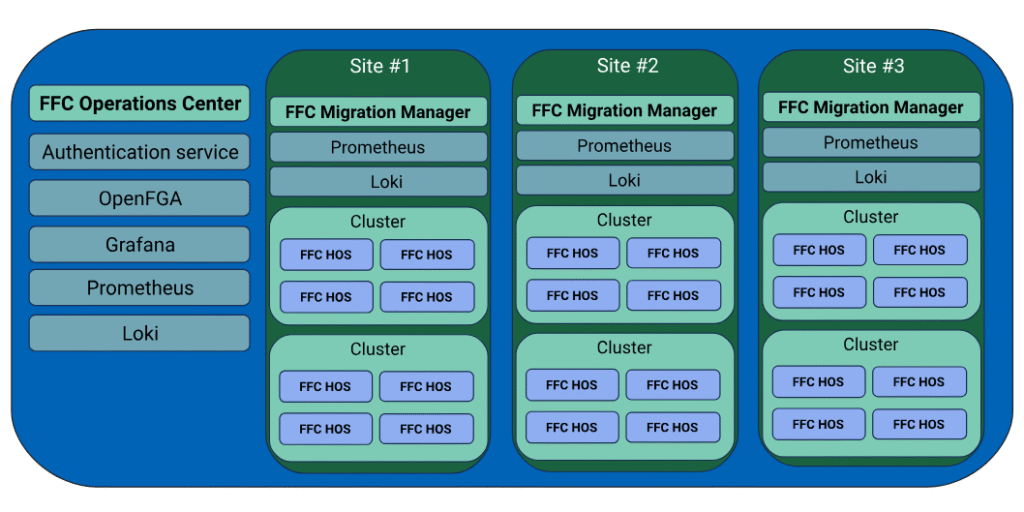Besides my regular open source contributions and running my own consulting business (Zabbly), I’m also the CTO and co-founder of an Open Source company called FuturFusion where I’ve been running Engineering for well over a year now.
My main focus over there has been building the FuturFusion Cloud stack, a completely open-source private cloud solution built around Incus. As part of that, our engineering team has been hard at work over the past year or so, improving Incus itself but also building a number of other projects from the ground up to make it easy to build and operate large scale Incus deployments.
Our stack is made of 4 core components:
- Incus itself as the private cloud platform that runs virtual machines, system containers and application containers, with full clustering and multi-tenancy as well as support for a variety of storage and networking options to fit most environments.
- IncusOS (shipping as HypervisorOS to our customers) that acts as our base layer Operating System image running on all physical servers as well as in the virtual machines that run our other components. It’s an immutable OS image based on Debian 13 and using systemd’s tooling to provide a safe boot experience and full disk encryption through the use of UEFI Secure Boot and TPM 2.0 modules. It uses an A/B update scheme, guaranteeing no variance in software between servers and an easy rollback mechanism should something go wrong. It’s completely locked down with API-only access and optional central management through Operations Center.
- Operations Center provides an overview of an entire deployment, keeping track of all individual servers (running HypervisorOS), centrally managing all updates, handling Incus cluster creation and then acting as a global inventory of every Incus resource across all clusters.
- Migration Manager is our migration tool which currently focuses on migrating from VMware (vCenter or standalone ESXi) over to Incus. It can connect to a large number of source VMware environments as well as target Incus clusters. It can easily keep track of hundreds of thousands of VMs that need to be migrated, making it easy to create migration batches and schedule those over weeks or months, running regular data pre-migration and finally completing the migration during scheduled downtime windows.

I recently took a bit of time away from customer deployments to record a video of how everything fits together, including an end to end lab deployment, starting from a pre-existing VMware environment and going all the way to having two Incus clusters running and the VMware VMs fully converted to Incus VMs.
In addition, for those interested in the security aspect of things, I gave a talk a few months back about IncusOS’ security story at the Linux Security Summit in Denver, Colorado. The recording of which has since been made publicly available.
Now our focus on the engineering front is primarily in fixing some filling a few remaining gaps as well as putting together up to date comprehensive documentation on IncusOS, Migration Manager and Operations Center. This will then make it easy for anyone to get started with those as well as hopefully attract more contributors to those projects.
On the topic of contributors, none of this would have been possible without the 112 individuals who contributed to the Incus project in the past year, thank you!
 Github
Github Twitter
Twitter LinkedIn
LinkedIn Mastodon
Mastodon